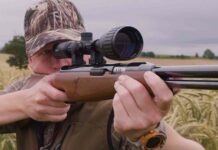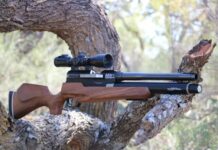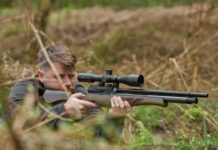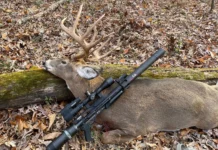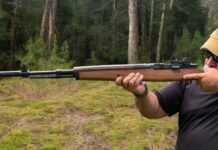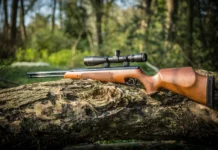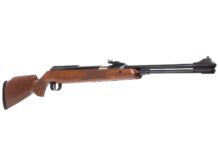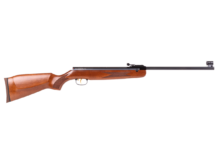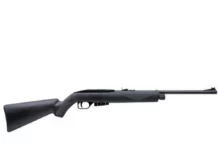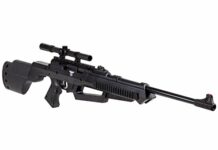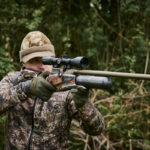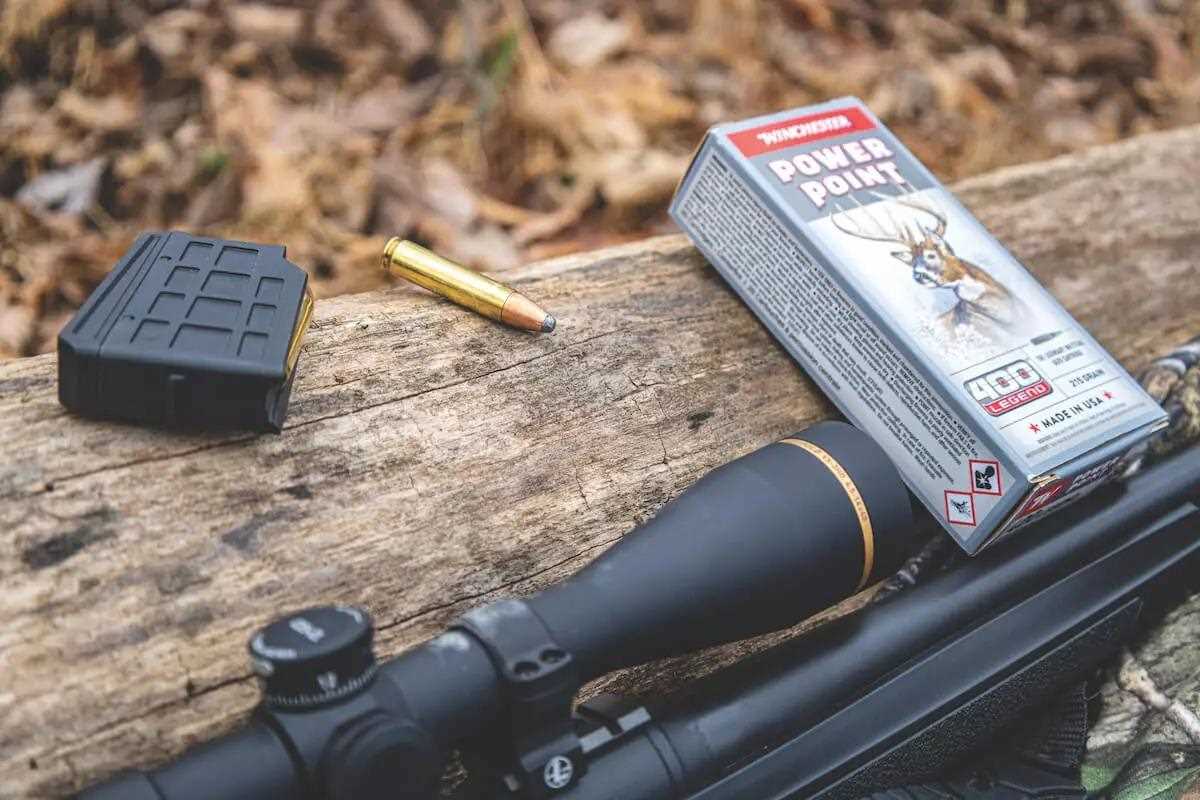
Winchester’s new .400 Legend is the latest cartridge purpose-built for hunting in states that permit straight-wall centerfires. (Photo by Drew Warden)
Even as hunters seek rifle cartridges with more reach, some short- to moderate-range cartridges are trending. This is because several states have loosened restrictions recently on legal deer hunting cartridges. Some states that only permitted slugs now allow straight-wall cartridges with limited range. Ammo makers have responded with better loads for older straight-walls and new cartridges built especially for straight-wall laws.
A straight-wall cartridge is one without a shoulder. The case—though slightly tapering in diameter—is straight, from the rim or base to the case mouth. Common for old single-shot and lever-action rifles, it’s also the case design for revolver cartridges. Recently, the concept has been applied to AR-15 compatible cartridges. And Remington debuted a new straight-wall cartridge for lever-action rifles, too.
If you deer hunt in a straight-wall state, which straight-wall cartridge is your best bet? Let’s examine the newest options and see how they compare to the old-timers.

Table of Contents
.350 LEGEND
When Winchester introduced the .350 Legend in 2019, it got some push-back. Hunters wondered how a brand-new cartridge could be a “legend.” No matter. The .350 Legend was an instant success, offering hunters in straight-wall states a viable, light-recoiling option for bolt guns and ARs. Surprisingly, the cartridge gained acceptance nationwide due to its balance of ballistics and recoil.
With a new upper receiver, it converts a .223 Rem. AR-15 into a great deer rifle for young or recoil-sensitive shooters. Nearly 20 distinct .350 Legend factory loads now exist in bullet weights from 124 to 180 grains, and Hornady and Winchester also offer 250- and 255-grain subsonic loads.
Like most AR-15 compatible cartridges, the .350 Legend is loaded to 55,000 psi. Supersonic load velocities range from 2,000 to 2,350 fps, depending on bullet weight and barrel length. The 100-yard impact terminal performance in 10 percent ordnance gelatin or Clear Ballistics gel often shows between 14 to 20 inches of penetration with bullets upsetting with a frontal diameter of between .60 to .75 inch. With a 100-yard zero, bullet drop is about 17 to 20 inches at 250 yards, with a remaining energy of around 800 foot-pounds.

.360 BUCKHAMMER
This cartridge may be the end of the .35 Rem. Currently, only Henry offers a rifle chambered in .35 Rem., but the company worked with Remington to design the .360 Buckhammer cartridge and already offers two rifles for it. The .360 Buckhammer basically mirrors the .35 Rem.’s ballistics, but since it’s a straight-wall cartridge, it’s legal to hunt with in more places. Also, only about five factory .35 Rem. loads exist. The .360 Buckhammer already has four. Although it will likely find its way into some single-shot rifles, the Buckhammer was made to offer a straight-wall-legal lever gun option beyond larger-caliber cartridges like the .444 Marlin and .45-70.
The .35 Rem. is loaded to a maximum average pressure (MAP) of 33,500 psi versus the Buckhammer’s 50,000 psi. This lets the straight-wall cartridge compete with the bottlenecked .35 Rem. The factory 200-grain Remington Core-Lokt Buckhammer load has an advertised velocity of 2,200 fps, and Remington’s 200-grain .35 Rem. load is listed at 120 fps slower. With 100-yard impacts in ballistics gel, both penetrate to nearly 20 inches with bullets upsetting with a frontal diameter of more than a half inch. With a 100-yard zero, expect nearly 2 feet of drop at 250 yards and about 700 foot-pounds of remaining kinetic energy.
.400 LEGEND
Winchester likely launched the .400 Legend, the newest straight-wall, earlier this year to capitalize on the .350 Legend’s success. It’s loaded to 45,000 psi and is also AR-15 compatible. But, the .350 Legend is based on the .223 Rem. case and has the same rim diameter. Switch your .223 AR-15 upper for one in .350 Legend, and you don’t need a new bolt. The .400 Legend has the same rim diameter as the 6.8 SPC and .224 Valkyrie cartridges, but its rim is rebated by .018 inch.
The .400 Legend fires a .40-caliber bullet, so it can be handloaded with 10 mm pistol bullets. The current Winchester load uses a 215-grain Power-Point at 2,250 fps. With a 100-yard zero, drop is about 18 inches at 250 yards, with about 950 foot-pounds of energy left. I’ve not tested the .400 Legend, but I’d expect terminal performance comparable to the .35 Rem. and .360 Buckhammer. There’s also potential for wildcatting and necking it down to fire smaller diameter bullets for non-straight-wall applications.
OTHER, OLDER OPTIONS
Straight-wall cartridges have existed for ages, and many of the older ones are legal for hunting in straight-wall states. But just because a cartridge case doesn’t have a shoulder, doesn’t mean it’s straight-wall legal in your state. Caliber or bullet diameter, case length and overall cartridge length may affect straight-wall legality. Check your state’s regulations.
The .444 Marlin and .45-70 Govt. are popular choices, but currently almost no manufacturers offer a .444 Marlin rifle. Some revolver cartridges often chambered in lever guns are also straight-wall legal. The .357 Mag., .44 Mag. and .45 Colt work on deer out to about 150 yards or so. And then there’s the .450 Bushmaster, originally conceived for the AR-15. In terms of performance, it’s right on the heels of the .444 Marlin.
See which straight-wall cartridges are legal in your state. Then pick the type of rifle you want and the straight-wall option that best suits your hunting needs.
